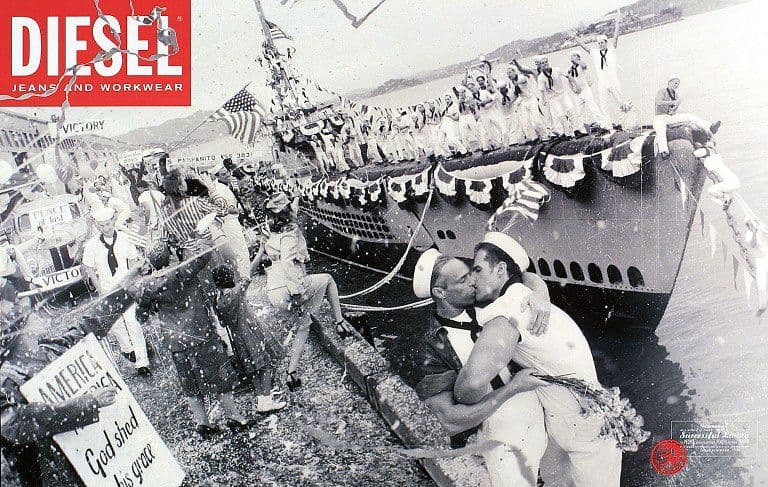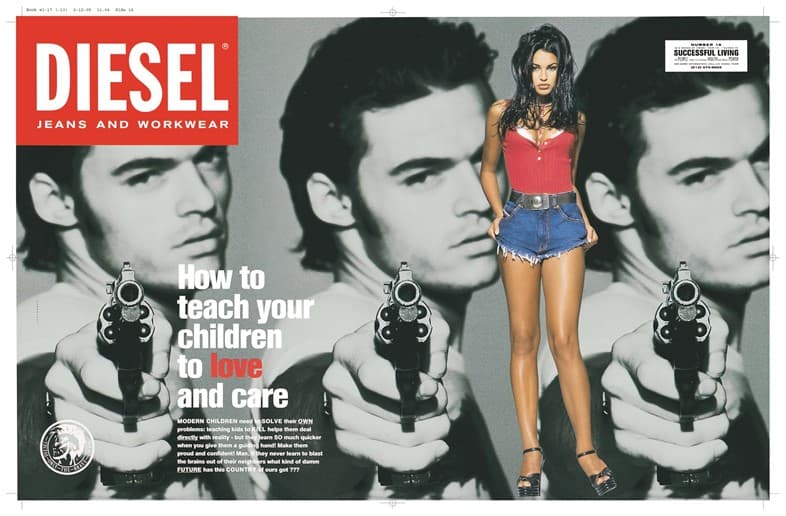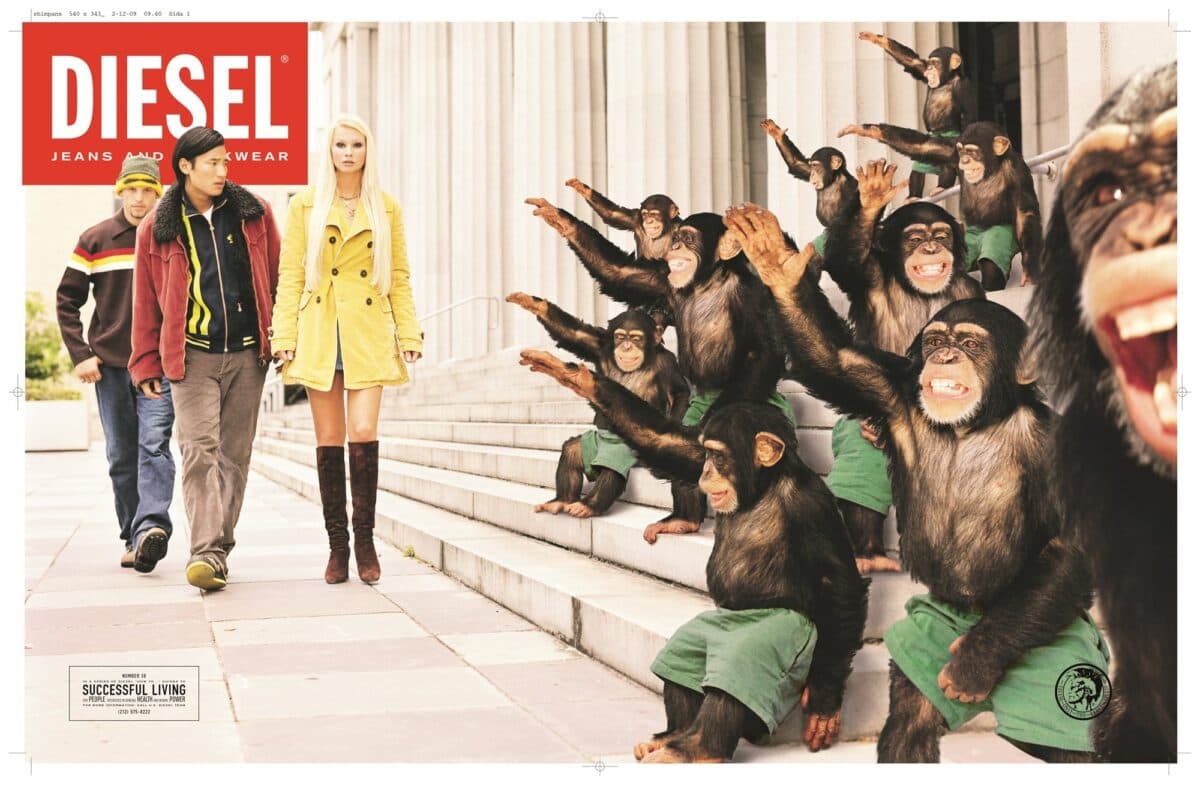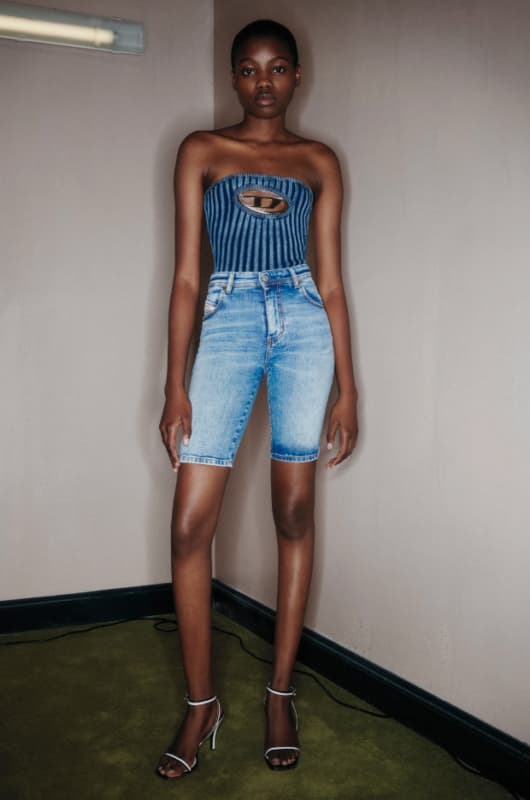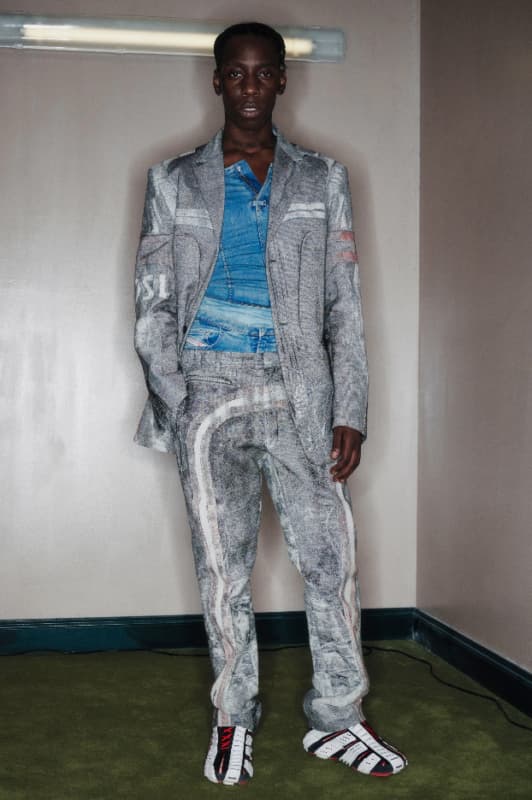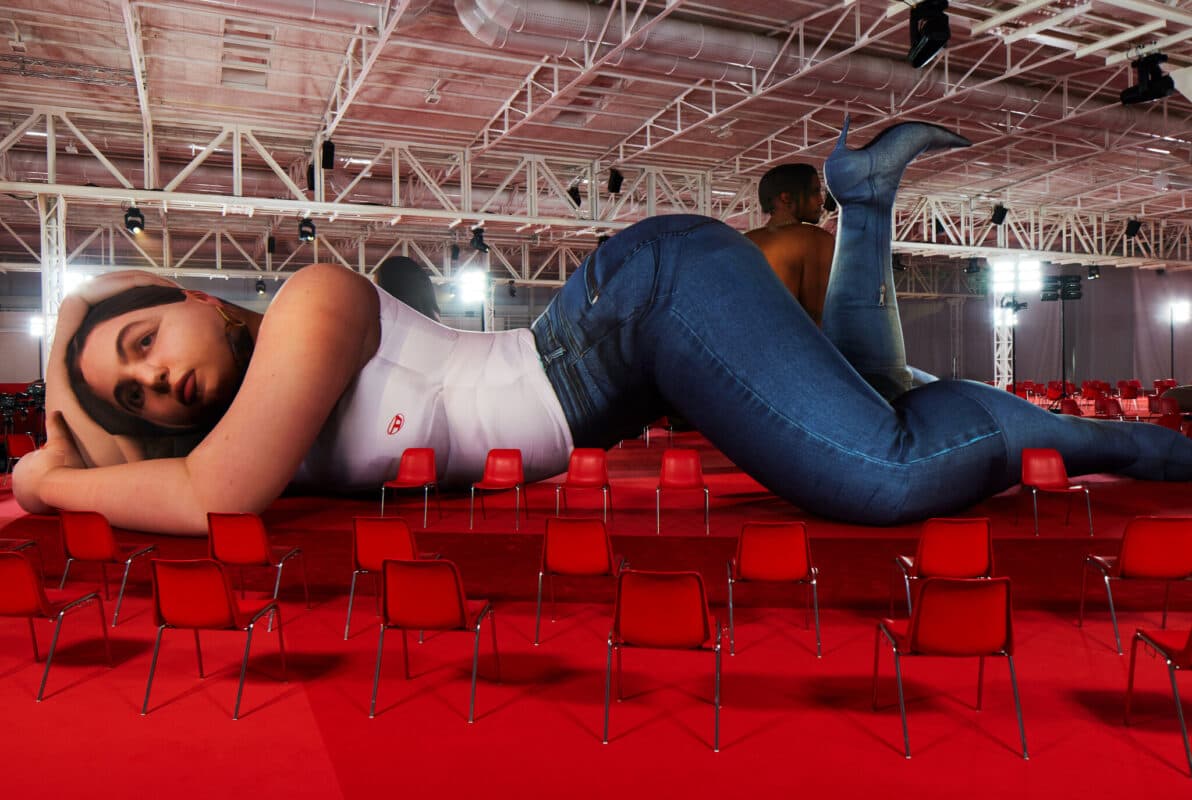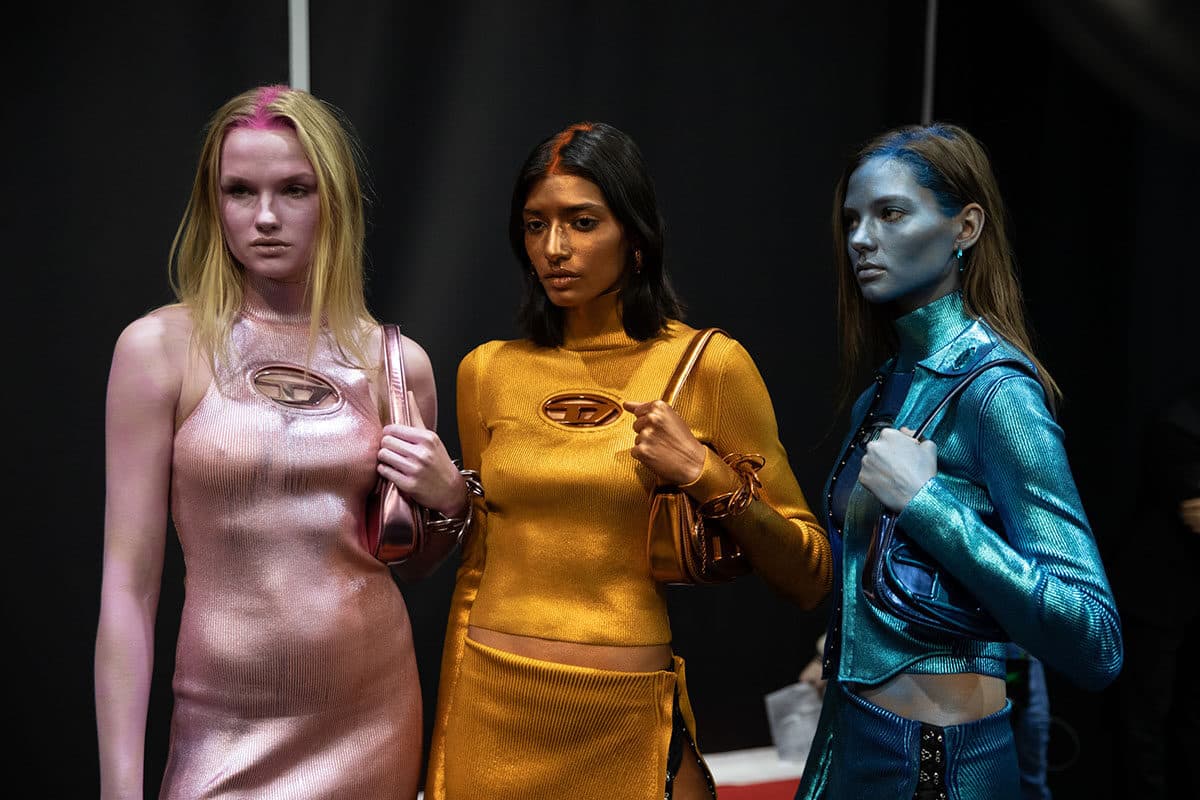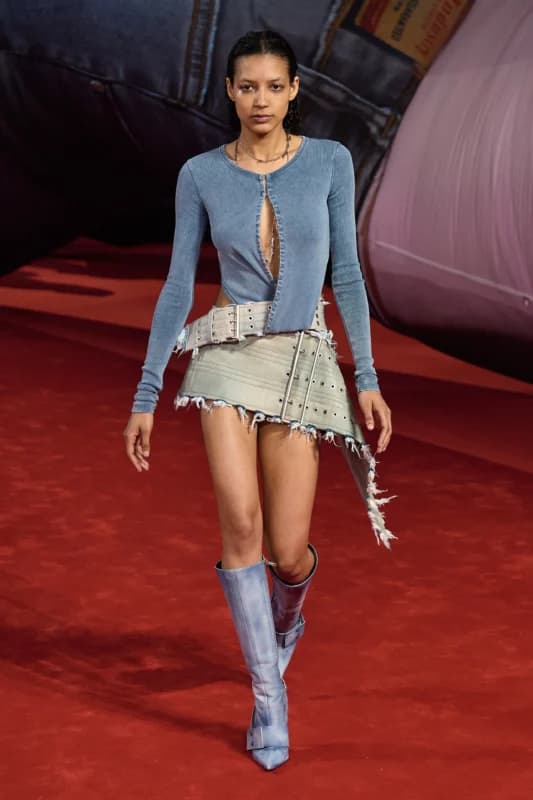If I told you eight years ago that in 2023, Coach would actually be cool, that micro-sized bags would dominate the street style scene, and that low-rise Diesel denim became a top trend, would you believe me? Maybe not. But look where we are. The Coach Tabby is one of the most sought-after shoulder bags for the fashion crowd, Jacquemus started a viral micro bag trend with the Le Chiquito that took over the world, and yes, Diesel is back and bigger than ever before. So what exactly is happening and are we living in a simulation that glitched back to 2001? Not exactly (as far as I know). Instead, fashion is proving the theory that there are no new ideas.
I used to roll my eyes when someone used to tell me that too, but after working in a creative industry where every day I have to brainstorm new ideas, I have come to realize the level of truth in that statement. Not to fully nerd out here, but Mark Twain really put it best: “There is no such thing as a new idea. It is impossible. We simply take a lot of old ideas…give them a turn and they make new and curious combinations.”
This whole cause-and-effect from social media nostalgia-lust to modernized rebrands has led to a full comeback culture in fashion.
The fashion world is a perfect example of this concept. Fashion essentially functions as a cycle, with designers turning the wheel and constantly taking inspiration from the past. Thanks to TikTok, this “no new ideas” notion has been amplified by Gen Z’s nostalgia obsession, as users have been rediscovering and sharing their own take on trends and brands that dominated prior decades (the Y2K craze started on the platform afterall). So now, 90s and early 2000s brands who seemed to lose their touch as times changed are suddenly updating their once popular styles to reconnect with new customers. This whole cause-and-effect from social media nostalgia-lust to modernized rebrands has led to a full comeback culture in fashion.
And there’s no better comeback as of late than Diesel – a brand that dominated the fashion landscape in that same 90s and early 2000s time period with its alternative approach to denim and provocative marketing campaigns. Diesel was the “It” brand of the rebels, the catalysts, the cool kids. Wearing Diesel wasn’t just a style statement back then; it was proving to people you had a certain attitude. One that said “I am who I am, and I don’t care what you think about it.” But amidst the chaos of blogger-mania, Instagram’s trendy influence, and the takeover of high-rise denim, the logo-eccentric Italian brand went from cool to cringe in the snap of a distressed ‘D’ button.
Twenty years later, now Diesel is all anyone can talk about after a comeback show with new Creative Director Glenn Martens back in June 2021. You can’t go far without seeing a Diesel 1DR bag or B-1dr belt gracing the streets and the feeds. So how does a brand go from being one of the most coveted denim labels in the early aughts to filing for bankruptcy and now becoming the “It” brand once again?
Well, for starters the brand embraced the “no new ideas” concept in its design strategy under Glenn Martens. Instead of rebranding completely, Martens decided to take the integral elements of Diesel, give them a turn, and reimagine new and innovative combinations (as Mark Twain says). Martens knew he had to appeal to a modern, socially-conscious customer: one who is aware of the brand’s heritage but still firmly fixed on the future. And this paid off, as “New Diesel” feels fresh, forward, and electric, but still undoubtedly Diesel. Celebrities and style icons including Dua Lipa, Rihanna, and Megan Thee Stallion have proven to the public that Diesel really is cool again.
To fully grasp the cyclical nature of the Diesel story – from a rebellious vision to global success and a surprise comeback – we have to start from the beginning.
This is the StockX Brand Spotlight of Diesel.
Diesel’s Dog Days
It’s only fitting that the story of a rebellious denim brand starts with disruption. In a small farming town in Brugine, Italy at the age of 15, founder Renzo Rosso decided to stitch his first creation on his mother’s Singer sewing machine. His first design was a pair of low-rise bell-bottom jeans, a style that ditched the usual constructions of men’s bottom-wear. Right from the start, Rosso showed his unconventional way of thinking– a quality that later defined Diesel.

Founder Renzo Rosso, Venezia 1967. Source: W Magazine
Rosso went on to study textiles and manufacturing at the Marconi Technical Institute. When it came to colors, shapes, and patterns, he always went against the basics and started to carve his own path in design. Through a connection from a friend, Rosso met the “Godfather” of denim– Adriano Goldschmidt (AG Jeans, Citizens of Humanity, Goldsign). Goldschmidt saw something special in Rosso and offered him a job at Moltex, a local factory that made trousers and denim for several Italian brands. After just two years, Rosso had drastically increased the company’s production and in 1978, with the help of a loan from his father, he bought a 40% stake in the business. Together with Goldschmidt, Rosso wanted to infuse the avant-garde style of Italian clothing with the casual, relaxed aesthetic of American style. The result was a brand that disrupted the usual description of a denim label and appealed to a younger audience. By 1985, Rosso became the sole owner of the business and Diesel was born.
The Diesel Way
The word “diesel” is considered an alternative energy source. So it makes sense that Rosso chose this word to define his brand, as Diesel stood for an alternative taste in fashion and the denim-making craft. Rosso has also stated that he chose the brand name due to its universality, as it is pronounced the same way around the world. He knew even from the brand’s inception that Diesel would be recognized (and talked about) globally.

Renzo Rosso and team. Source: Made in Italy
After gaining sole control of the company, Rosso started to really experiment with his designs. He hired an international team of talented young designers and staff members to give the brand a refreshing point of view. Rosso found people with similar design tastes as his own and together they ignored seasonal trends within the fashion industry and instead were influenced by global culture and their own unique personalities. The late 80s were dedicated to experimenting with the denim fabric and using methods inspired by Rosso’s travels. From patchwork denim jackets he saw on the Venice boardwalk to colorful jeans inspired by Mexican houses, Rosso fearlessly tested out different denim designs in all shapes, colors, and fits.
It was in this experimental phase that Rosso came up with the idea of making jeans that looked used. Nowadays, all anyone wants is vintage-inspired jeans, but back then, designing denim to already look worn-in was not really thought of before and was a big risk. Rosso betted that the style conscious, new money generation of the Wall Street era would pay handsomely for jeans that were brand new yet looked vintage. So he went all in. The risk paid off, as distressed denim took off under the Diesel label and led to new ways of denim manufacturing and inventive washes across the industry, including acid wash.

Diesel pocket strip. Source: Isituto Marangoni
With brands inspired by Diesel’s designs and innovation, Rosso wanted to make sure his brand still had unique details customers could see to quickly identify the denim as Diesel. He created the famous coin pocket strip, a small pocket on top of the right front pocket with a diagonal stripe and the brand’s name sewn across. Just like Levi’s red vertical tab, this pocket strip became Diesel’s trademark detail so everyone would know who you were wearing.
The Secret “For Successful Living”
In the early ‘90s, Rosso wanted to come up with a tagline that would remain both timeless, but also true to the brand’s bold, disruptive philosophy. Rosso stated that he wanted to make sure this phrase captured the eccentricity yet playful spirit of the brand, while also making customers feel involved in the world of Diesel. Rosso wanted the campaigns to talk to consumers like friends instead of from a higher place of status. He believed in order to live successfully, you had to stay true to yourself and not take yourself too seriously. Thus, the “For Successful Living” campaign was born.
Launched in 1991 as the first international marketing effort and running over the course of a decade, Diesel’s “Guides for Successful Living” advertisements used societal issues and tongue-in-cheek humor to poke fun at big corporations and establishments that promoted better living through hyper consumerism (all while selling jeans along the way of course). Rosso’s advertising partner, Jocke Jonason, told Dazed that the ads were “provocative, funny, but also intellectual – we more or less tried to pick up the conversation that was going on in society around us and make art of it”.

Source: Diesel
These campaigns juxtaposed visuals of beauty and glamor shots with provocative headlines that implied societal themes and issues. For example, one campaign featured a group of muscular, sweaty men with the slogan “Thanks Diesel, for making us so very beautiful.” The idea was to parodize big brand advertisements who promise young women empty promises of beauty if they use their products. By flipping the script and using men as the subject, Diesel was not only creating an eye-catching denim ad, but also standing up for gender equality. Sex, race, and religion played a huge role in these campaigns, while also proving that Diesel had their finger on the pulse when it came to current culture and conversation within the younger generations. The campaign ended up winning a Grand Prix at the Cannes Lions International Advertising Festival.
It was these provocative ads that transformed Diesel into more than just a denim label; it became a lifestyle and an attitude. Young generations looked up to Diesel as an aspirational brand calling out older generations for their dated beliefs on consumerism, sexuality, gender, and society. Take for example one of their most popular campaigns ever– a photography of two kissing sailors at the peace celebration of World World II. This campaign was the first major public advertisement to showcase a homosexual couple kissing. Diesel’s ambition to break new grounds inspired younger audiences to want to embody the traits Diesel was showcasing through their designs and campaigns: outspoken, irreverent, open-minded, and rebellious. Rosso even has stated, “In 1978, Diesel came into being. It was the moment of alternative energy. We’ve continued with that energy and that fearlessness through to the present. At the core, there’s no difference between who you are and how you identify. Diesel is an attitude, and it always will be.”
Diesel “Guides For Successful Living” Ads 1991-2001
Diesel took off after the success of their marketing campaign, going on to launch the first significant fashion retail website, which included images of each of its collections, along with international stores in New York, London, and Rome. So how did a fashion company that revolutionized how brands interact with the younger generation slowly fade into irrelevance? Well for starters, distraction by its founder played a major role.
Rosso wanted to continue to capitalize on Diesel’s exponential rise to global stardom by building a group of other successful brands based on Diesel’s same strategy. In 2000, he acquired Staff International, a distributor of global design labels, and in 2022 Rosso gained majority of the shares of Maison Martin Margiela. He called his new company the OTB Group (Only The Brave) and proceeded to buy other fashion brands under the umbrella. Rosso diversified these labels under his power and vision, extending the offerings to include more products outside of clothing. He wanted each brand to represent a lifestyle, just like Diesel.
"At the core, there’s no difference between who you are and how you identify. Diesel is an attitude, and it always will be." - Renzo Rosso
Rosso also knew the power of collaboration and went on to partner with L’Oréal, adidas, and Sony’s PlayStation to create unique collections that tapped into different industries – from beauty and athletics to the virtual space of gaming. Rosso’s innovation in extending the influence of fashion (and denim in particular) to other worlds made him feel like his job was done, and he took his focus off of Diesel. As a consequence, Rosso left Diesel in the hands of other managers without any oversight, and customers felt abandoned, as if the Diesel lifestyle they were buying into was fading away with the founder’s distractions. Thus, Diesel branding went down in value, going bankrupt in 2019.
The Comeback Kid
Now seen on today’s top influencers and fashion’s elite, it’s hard to fathom how Diesel could have filed for bankruptcy back then. The truth is, Diesel never fully disappeared; the brand was just hibernating. If there’s anything we know about Rosso at this point, it’s that he’s always thinking one step ahead, planning his next move meticulously.
Rosso knew that in order to appeal to the next generation, he couldn’t just replicate 90s Diesel and force people to listen. He needed to update the creative strategy and conversation so Diesel would now appeal to the Gen Z customer – one who puts authenticity and intention at the forefront.

Glenn Martens with Renzo Rosso. Source: Vogue Business
So to take Diesel out of the dusty archives and make it shiny and fresh once again, Rosso decided to appoint rising Belgian designer Glenn Martens as the new Creative Director of Diesel in October 2020. Martens was already the Creative Director of avant-garde Parisian streetwear brand Y/Project, where he was best known for deconstructing denim garments and innovating complicated silhouettes that usually came with its own “how-to-wear” manual. Martens had a subversive approach when it came to designing and Rosso was attracted to his rebellious mindset. More importantly however, Martens favored sustainability in his work, which Rosso knew would appeal to the social-conscious Gen Z audience.
“Diesel is fun, it’s sexy and it’s also socially responsible – it’s all the same energy.” Martens told Prestige Online in an interview in April 2023. “It’s how young people are today; they party, they push life to extremes and they stand up for their beliefs, for their community.” Marten knew that if an outdated brand could shift their perspective to focus on matters of current culture, it could reconnect to a modern audience. Similar to how Rosso created denim and campaigns with the younger 90s audience in mind, Martens also had his finger on the pulse when it came to what Gen Z cared about in fashion and society.
Diesel Spring/Summer 2022 | Source: Vogue
Diesel Spring/Summer 2022 | Source: Vogue
Diesel Spring/Summer 2022 | Source: Vogue
Diesel Spring/Summer 2022 | Source: Vogue
Diesel Spring/Summer 2022 | Source: Vogue
In June 2021 – less than a year after his appointment as Creative Director – Martens showcased his first show at Diesel, unveiling the Spring/Summer 2022 collection for men and women at Milan Fashion Week. Due to COVID-19 restrictions at the time, the collection was revealed through a short film by Frank Lebon, inspired by the 1998 German movie Run Lola Run. Model Ella Snyder played the collection’s heroine, donning a pair of jean-boots, a white tank top, and a twisted vest with her fiery red hair blowing in the wind. As she speeds through various scenes throughout Milan, we see models wearing different looks from the 80-piece collection. Martens’ choice to cast a transgender model as the heroine of his debut defined his vision for a new future of the brand. However, Martens decision to not highlight that information was even more important, as it proved that Martens believed that’s what the future should look like. Everyone should be unapologetically and fearlessly themselves, without having to explain or call it out.
Diesel Spring Summer 2022 Film
With an emphasis on sustainability, the designs in the Spring/Summer 2022 collection used up-cycled fabrics and reused deadstock. Heritage styles were reimagined through a modernized, avant-garde lens including hits like the “jeanboots”, laser-print trompe l’oeil patterns, bleached treatments, five-pocket pants, and a reinterpreted logo. While the collection pushed the creative boundaries and took Diesel into the future, it still felt part of the same world. The iconic “D” logo, which was last seen in designs from 2004, reemerged on metal antiqued hardware and accessories, while denim was still at the forefront but reimagined in more playful ways, including patchwork and youthful frays. Martens also introduced the Diesel Library, a sustainable and permanent segment that promotes genderless styles.
This debut virtual show really set the bar high for Diesel, as critics anticipated this was just a first step into a whole new sexy, sustainable-minded, and youthful era of Diesel. They weren’t wrong.
Diesel Goes Viral
If the Spring/Summer 2022 virtual show opened the door, then the Fall/Winter 2022 show was the grand entrance into the new Martens-Diesel world. For his first in-person runway show, Martens was inspired by the “For Successful Living” campaigns that helped him embrace his own sexuality and self-expression as a kid.
“Diesel has always been radical,” Martens told Hypebeast. “A clever creative director will pinpoint the things that made a brand big in its heyday. Those controversial campaigns were so big for Diesel, and they were definitely a fundamental aspect of how I wanted to continue the brand. The louder, the better.”
"Diesel is fun, it’s sexy and it’s also socially responsible – it’s all the same energy. It’s how young people are today; they party, they push life to extremes and they stand up for their beliefs, for their community." - Glenn Martens
As noted above, the two sailors kissing campaign inspired younger audiences back then because it felt daring at the time, inspiring a new generation to express themselves by poking fun at traditional societal beliefs. “The first time I saw a gay couple making out, it was in a Diesel advertising campaign,” says Martens. “In the 90s, Diesel advocated for issues like gay rights or anti-racism. Back then it was subjects that few were talking about.” Now Martens wanted to do the same, but make it 2023 of course. His vision was to use sex positivity as the talking point, boasting a playful yet provocative campaign that made audiences feel like they weren’t at just another classic fashion show; Diesel was the alternative.
Diesel Fall/Winter 2022 | Source: NY Times
Diesel Fall/Winter 2022 | Source: High Snobiety
Diesel Fall/Winter 2022 | Source: Vogue
Diesel Fall/Winter 2022 | Source: Vogue
Diesel Fall/Winter 2022 | Source: Vogue
Diesel Fall/Winter 2022 | Source: Vogue
Diesel Fall/Winter 2022 | Source: Vogue
Diesel Fall/Winter 2022 | Source: Diesel
From the 69 looks in the collection (no, that number wasn’t a coincidence) to the larger than life runway decor, the Fall/Winter 2022 show embodied Marten’s deep knowledge of the brand’s former cool factor while also embracing his own disruptive, sexy, and fluid vision for Diesel’s future. The show was set in a warehouse filled with mega-sized blow-up “models” donned in Diesel denim and white tank tops from the the Spring/Summer 2022 collection. The inflatable bodies were placed in provocative poses and some had 3D scans of the real-life models on the faces. It was a fun, cheeky approach to what sexuality represents in the current age: it’s fluid, it’s fun, and most of all, it’s celebratory. Show attendees sat on a lush red carpet, which served as the perfect contrast to the denim-clad looks walking down the runway.
The collection was a masterclass on how to merge the essence of a brand with a contemporary vision. Martens expertly explored Diesel’s Y2K aesthetic and revived it with innovative details, including denim distressing, fraying, and layering. Seen in the lapels of coats to the waistband of jeans, the unique distressed details proved there were no limits on where Martens could go with the denim fabric. For example, an overcoat had so much denim fraying, it looked like an edgy version of a fur coat. He also brought back a touch of early 2000s Diesel with low-rise denim cuts, but updated the styles with distressed waist bands and elevated deconstruction. The collection also had an emphasis on sex prowess, with models strutting down the runway in skin-tight denim bodysuits as if they were spray-painted on and skimpy micro minis. “What is more successful for living than having sex?” said Martens, riffing off Rosso’s original motto for the brand.
Diesel Fall/Winter 2022 | Source: Vogue
Diesel Fall/Winter 2022 | Source: Vogue
It’s the micro mini category that took Diesel to viral status. Martens played off the short skirt trend seen at Miu Miu and pushed it even further. The skirt used the format of a leather Diesel belt but Martens exaggerated the proportions, transforming it into an ultra short wrap skirt. The style sent social media platforms and fashion insiders into a frenzy. TikTok users and critics couldn’t get enough, creating a fiery debate online. Traditional media outlets were confused, calling the viral skirt unwearable and a “sloppy” design. While the young and daring were instantly obsessed, wanting in on the hype and head-turning length.
Martens didn’t set out to make an everyday wearable skirt; his goal was to create a conversation. And it’s this focus on discourse around fashion that sets Martens apart from traditional creative directors. The best way to put it is the line from Devil Wears Prada: “Fashion is not about utility…an accessory is a piece of iconography used to express individual identity.” It’s this concept Martens truly grasps in his vision: The New Diesel marks not just a revamped design era; but a new persona, one that is still fearless, but also eco-conscious, fluid, and liberated.
The 1DR Bag
After his two breakout collections, Martens already proved to the public he was taking Diesel in the right direction. But it was his skill in injecting modernity into the 90s brand logo that really sent Diesel into another stratosphere. From oversized D’s seen across skirts and tops to the familiar Diesel font emblazoned across accessories, there was no shortage of branding in Martens first two collections with the brand.
However, instead of following former Gucci Creative Director Alessandro Michele’s logomania aesthetic, Martens again reimagined the use of the logo. The Diesel D was smartly tied into conceptual designs, feeling intentionally part of the design rather than a hypeworthy approach. It wasn’t subtle yet it also wasn’t over-saturated to the point of logomania.
Megan Thee Stallion in Diesel | Source: Daily Mail
Kendall Jenner in Diesel | Source: British Vogue
Dua Lipa in Diesel | Source: Purse Blog
Diesel 1DR Bag | Source: @inslopez
This balance of logo usage created a cool contrast in his designs, feeling stylishly futuristic yet intentionally nostalgic at the same time. It’s this modern nostalgia that took one specific handbag design from Martens early collections and catapulted it to “It Bag” status. Meet the Diesel 1DR Bag – the style that stole Gen Z’s hearts and led to Lyst naming Diesel as the logo of the year. You can see how Martens’ cool contrast is fused into the bag’s design: it’s straight-forward, yet fun; futuristic yet Y2K-inspired, sexy yet sleek, affordable yet luxurious. The bag is adorned with the oversized D logo and has a structured industrial hobo shape. The design is the epitome of Diesel’s grungecore aesthetic, blending a new retro shape of the logo flap with a modern sturdy build. It comes in a variety of colorways – including metallics and mirrored finishes – but the bag is also affordable, retailing from $250 to $550. The bold, enlarged logo is easily recognizable on the streets, resonating with a generation who has an affinity for early 2000s nostalgia. “The 1DR bag is direct, easy, sexy, genderless, and fun, which is ultimately exactly Diesel’s core value.” explains Martens. Gen-Z fashion fave Megan Thee Stallion posted a picture of herself with a pink mirrored 1DR bag and matching Diesel dress, and the internet went crazy for the style, as the bag saw a 248% increase in searches and sold out everywhere.
Diesel 1DR Bag on StockX
It’s one of the top selling handbags on StockX, with the silver colorway being a stand-out.
The Future of Diesel
Martens isn’t just a denim devotee. He’s also a visionary, with one foot placed in the past Diesel archives and one heavily in the future. Yes, his elevated Diesel era has given us collections filled with daring styles and future nostalgia. But it’s Martens’ fresh perspective that has secured Diesel as a core brand that will continue to define what fashion means in the current age. He has developed a magical formula of knowing how to appeal to the current generation, how to start a viral conversation, and how to do denim like no one else. Most importantly, he knows that a brand is more than clothes; it’s an identity.
Whether you’re a consumer, designer, or just appreciate the craft, the world’s take on fashion is always changing. And that’s something Diesel (and Martens himself) is very much aware of. Diesel’s revived success can be attributed to Martens ability to overlap the then and now, while also having a strong grasp on what it means to be a socially responsible brand. In other words, he knows how to relate to current culture. He has adopted the same bold, provocative attitude from early 2000s Diesel, but has now modernized the perspective. For one thing, the brand is fluid, as Martens has told Vogue that “everyone should wear what they want. Our denim is genderless.” Martens also doesn’t shy away from making a statement. From adorning his SS23 show with 200,000 condoms to the brand’s partnership with Durex, Martens is making a typically private and controversial topic mainstream, fun, and playful. New Diesel is all about freedom, choice, fluidity, and self-expression.

The Diesel Library
Another important part of New Diesel is its sustainable approach. Martens didn’t want to just be a creative director that made beautiful things. He has always wanted to make things with intention and purpose. It’s the reason why he started the Diesel Library, a sustainable and genderless capsule of the brand. Each piece in the capsule comes with a QR code in the pocket that buyers can scan to learn more about the denim and process. The Diesel Library is all certified sustainable, designed with a focus on responsible manufacturing methods. It’s why the capsule is only available in a limited range of colors to avoid bleach, unnecessary water wastage, and chemical usage. The Diesel Library now accounts for 40% of the brand’s sales, proving that Martens’ sustainable practices resonate with a younger demographic that is incredibly eco-conscious.
So if you’re still wary about this whole “no new ideas” concept, let Diesel’s successful comeback prove to you that while there may not be any brand new ideas, the best ones come from turning the wheel, changing your perspective, and coming up with infinite exciting possibilities.




